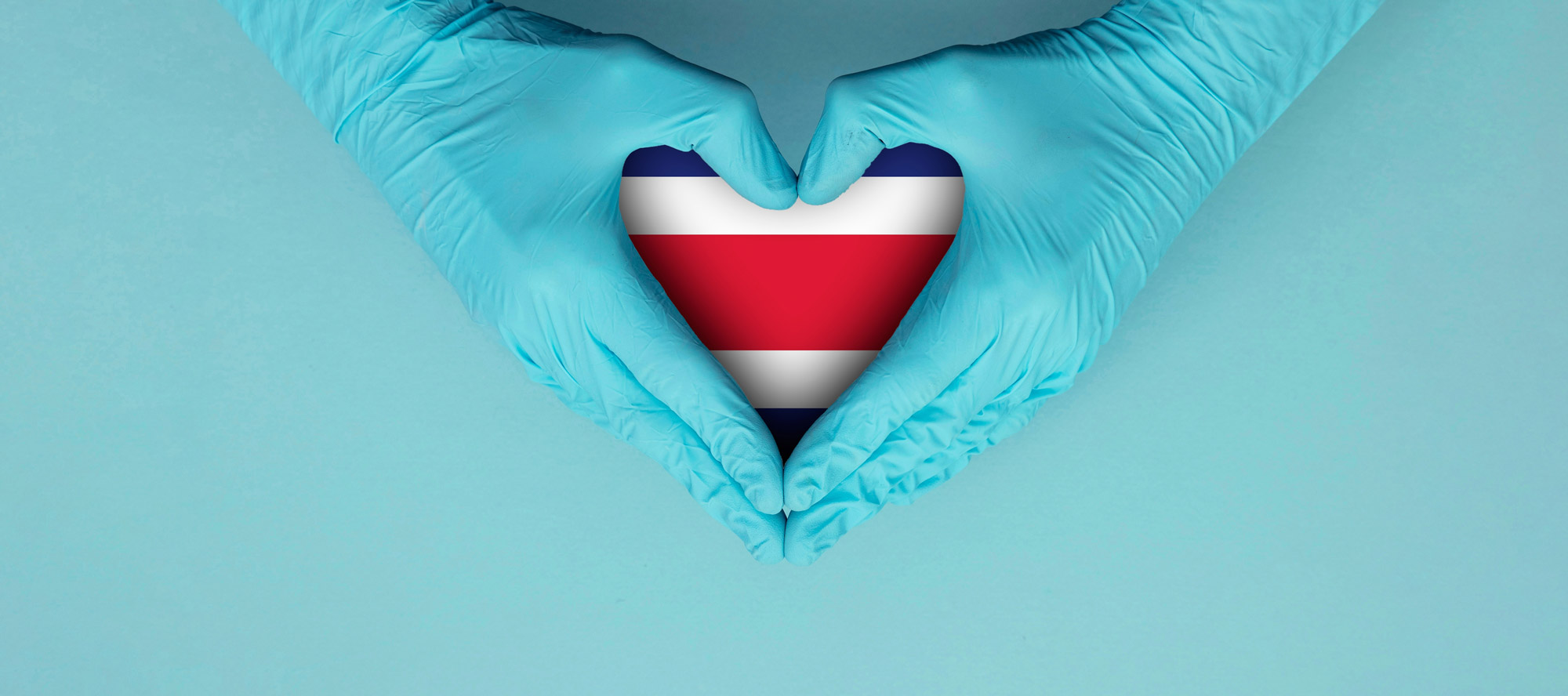Feature
How Costa Rica became a medtech leader
Costa Rica is emerging as a global medtech hub, driven by skilled talent and strong government support, writes Bernard Banga.

Medical professionals handling a cardiovascular implant in a sterile environment, highlighting precision in advanced medical device manufacturing. Credit: Ink Drop / Shutterstock
Tucked between coffee plantations and volcanic ridges, the small Central American nation of Costa Rica is quietly redrawing the global map of medical device manufacturing. Traditionally known for its lush rainforests and agricultural exports, Costa Rica is now leveraging its political stability and skilled workforce to attract a new wave of multinational medical device companies. In an era of shifting supply chains, these firms are turning to Costa Rica for speed, scalability and operational efficiency.
A thriving ecosystem
Global medical device leaders including Boston Scientific, Medtronic and Abbott are part of a growing cluster of more than 90 medtech companies now operating in Costa Rica.
“Ten of the world’s 30 largest OEMs have already established production facilities here,” says Frederico Rivera, President of the Costa Rica Medical Device Cluster.

Frederico Rivera, President of the Costa Rica Medical Device Cluster
In 2024, the country recorded a 42% year-on-year increase in foreign direct investment (FDI) in the first quarter alone, nearly half of which was directed toward advanced manufacturing, particularly medical technologies. This performance has reinforced Costa Rica’s position as a leading medical device exporter in Latin America, with exports exceeding $6.1 billion last year (44% of the nation’s total goods exports).

Marianela Urgellés, Managing Director of Costa Rica’s Investment Promotion Agency
“Medical devices are now Costa Rica’s top export,” Rivera explains. Costa Rica is currently the fifth-largest supplier to the US market. According to Marianela Urgellés, Managing Director of CINDE (Costa Rica’s Investment Promotion Agency), the sector has evolved over decades, expanding from just five to 16 areas of specialisation, including cardiovascular, respiratory, neuroendovascular and orthopaedic devices.
In 2025, the industry portfolio is expected to include high-precision technologies in neuromodulation, orthopaedics, optics, electrophysiology, and interventional cardiology. Costa Rica’s medtech growth aligns with broader global trends in advanced therapies, nearshoring strategies and developing resilient supply chains.
A strategic hub for advanced manufacturing
Recent expansions by global medtech players highlight Costa Rica’s growing role in high-value medical device manufacturing. In April 2025, US-based contract manufacturer Cirtec Medical announced the doubling of its operations in the Coyol Free Zone (see Box 1) The new 50,000-square-foot facility will support the development and manufacture of neurostimulation leads, catheter extrusion and full device assembly. Designed around a vertically integrated system, this expansion is expected to reduce time to market by up to 40%.

Brian Highley, Cirtec Medical Board Member
“This growth allows us to accelerate delivery, optimise costs and expand our manufacturing potential to meet rising demand,” says Brian Highley, Cirtec Medical Board Member. “Costa Rica provides the technical talent and cost efficiency needed to help our customers scale quickly while maintaining quality.”
In May, Germany-based MeKo, a leader in high-precision laser material processing, opened its first subsidiary outside Europe: MeKo MedTech S.A. in Costa Rica. The 15,069.5-square-foot facility specialises in the manufacture of nitinol and stainless-steel components, with capabilities for rapid prototyping and full-scale manufacture.
Our Costa Rican facility allows us to speed up delivery, optimise costs and expand our manufacturing potential to meet rising demand.
Brian Highley
Powered by 97% renewable energy, MeKo’s Costa Rican operations underscore the company’s dedication to sustainable manufacturing and fast-response logistics. Its strategic location enables faster delivery to US clients, shorter transport lead times, and lower supply chain risk.
STEM output and vertical integration
Costa Rica’s medical device ecosystem has matured significantly in recent years, propelled by a favourable socio-economic environment, a highly educated workforce and a supportive policy framework. The Central American nation boasts a literacy rate of 95% and a high output of graduates in the STEM disciplines.
Costa Rica’s robust academic infrastructure includes 58 universities - both public and private- several of which are specialised in scientific and technological disciplines, according to the Ministry of Education.
This wide-reaching educational network fuels the country’s talent pipeline, with around 4,000 engineering graduates entering the workforce each year from institutions such as the University of Costa Rica, the Costa Rica Institute of Technology, and the National University.
Public-private partnerships play a pivotal role in driving innovation. Collaborations between universities, research centres, and manufacturers have enabled companies to design and produce cutting-edge medical technologies. For instance, the partnership between the Costa Rica Institute of Technology and several medtech firms has supported the local development of high-precision catheter systems and advanced in-vitro diagnostic components, meeting international quality standards.
These synergies not only accelerate product development but also contribute to upskilling the workforce and fostering sustainable growth across the ecosystem.
While labourcost savings, estimated at 25% to 30% compared with the United States, remain attractive, they are not the primary driver for investment. Costa Rica also offers political stability, a host of freetrade agreements with more than 50 countries (including the US, Canada and the EU), and a streamlined regulatory environment which supports frictionless exports.
Sustainability and infrastructure concerns: the next frontier
The government has also built a strategic policy framework to promote foreign investment via PROCOMER and the Costa Rican Investment Promotion Agency (CINDE) and has established a comprehensive freetradezone regime, offering competitive incentives such as tax exemptions for foreign investors. The country currently hosts more than 30 free trade zones, including the Coyol Free Zone, recognised as one of Latin America’s leading life sciences clusters (see Box 2). These zones support vertical integration strategies which shorten lead times by up to 40% thanks to a well-developed logistics infrastructure and proximity to North American markets.
Although Costa Rica is widely recognised as a regional talent hub, the labour market remains highly competitive. Demand for STEM and bilingual professionals is surging, with rising wages fuelled by the growing presence of North American multinationals. At the same time, rapid industrial expansion is straining infrastructure. Concerns include growing logistics congestion and increasing demand for reliable energy. In response, the government has launched initiatives to improve energy resilience.
Medtech pushes to keep devices out of trade war
As tensions escalate over US tariffs on European medical technologies, the European Union is reportedly considering retaliatory duties on American-made healthcare devices imported into the bloc. However, leading European industry associations including MedTech Europe, the European Coordination Committee of the Radiological, Electromedical and Healthcare IT Industry (COCIR), the Association of British HealthTech Industries (ABHI), France’s SNITEM, Germany’s MedTech Cluster and Swiss Medtech are urging the EU to avoid a tit-for-tat response. Instead, these bodies are lobbying both the European Commission and U.S. authorities for exemptions or delays to tariffs.
“A balanced strategy is essential to prevent further escalation,” said MedTech Europe in a statement. “Medical technologies are not ordinary products – they are life-saving solutions relied upon by millions of patients.”

Astrocytes are a type of neural cell that builds the BBB, and Excellio plans to derive exosomes from them to make them even better at targeting the brain. Credit: ART-ur / Shutterstock
Caption. Credit:
Total annual production
Australia could be one of the main beneficiaries of this dramatic increase in demand, where private companies and local governments alike are eager to expand the country’s nascent rare earths production. In 2021, Australia produced the fourth-most rare earths in the world. It’s total annual production of 19,958 tonnes remains significantly less than the mammoth 152,407 tonnes produced by China, but a dramatic improvement over the 1,995 tonnes produced domestically in 2011.
The dominance of China in the rare earths space has also encouraged other countries, notably the US, to look further afield for rare earth deposits to diversify their supply of the increasingly vital minerals. With the US eager to ringfence rare earth production within its allies as part of the Inflation Reduction Act, including potentially allowing the Department of Defense to invest in Australian rare earths, there could be an unexpected windfall for Australian rare earths producers.
